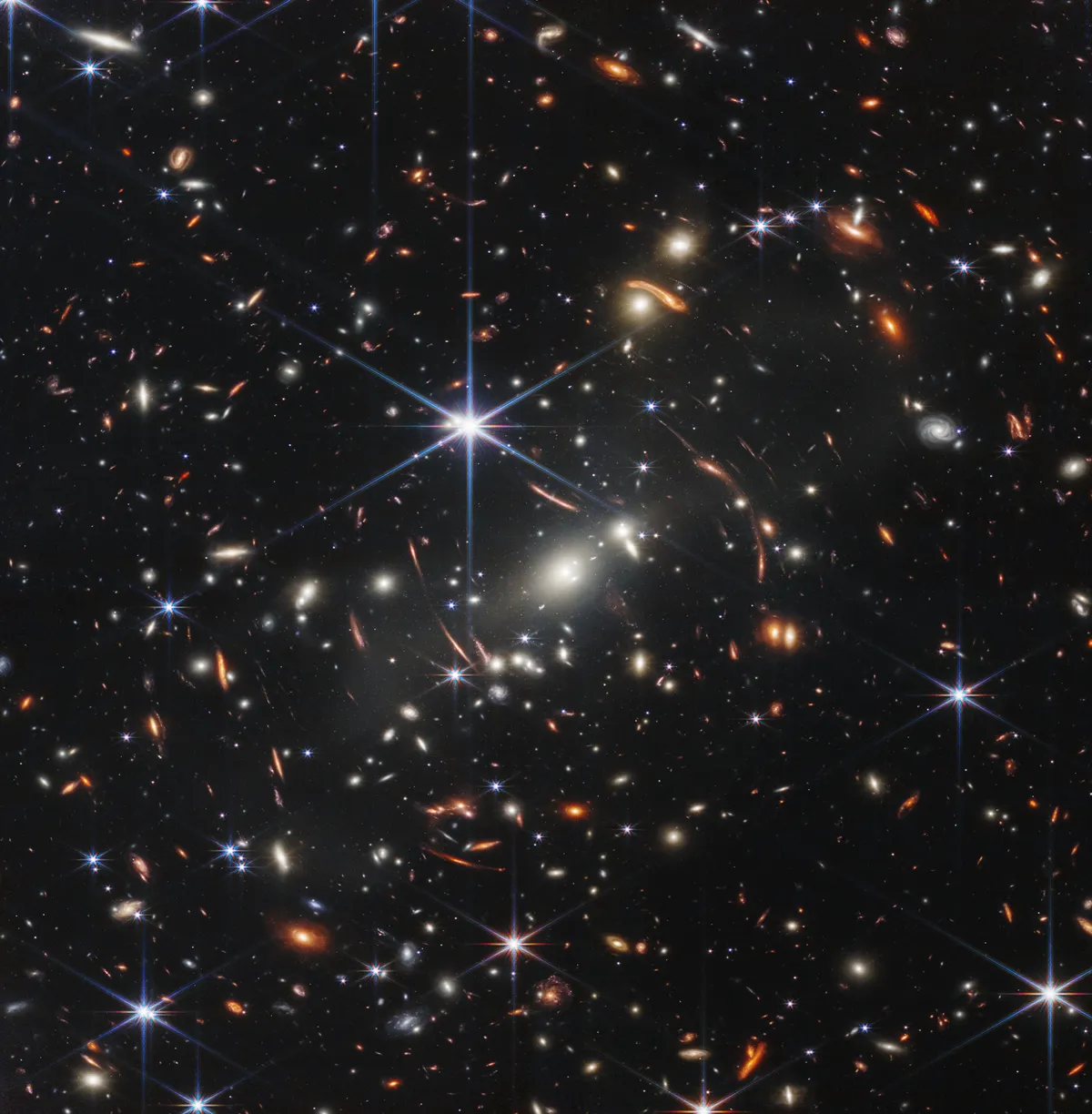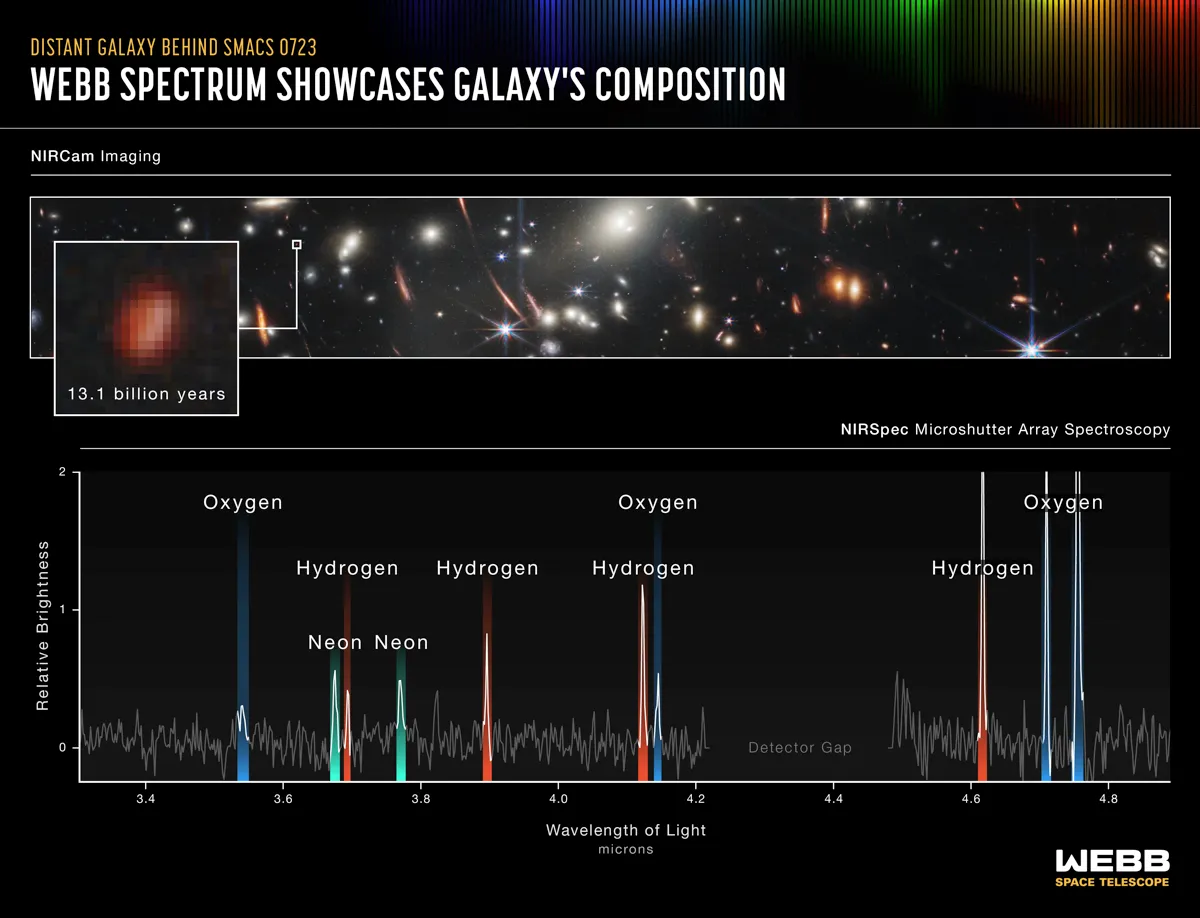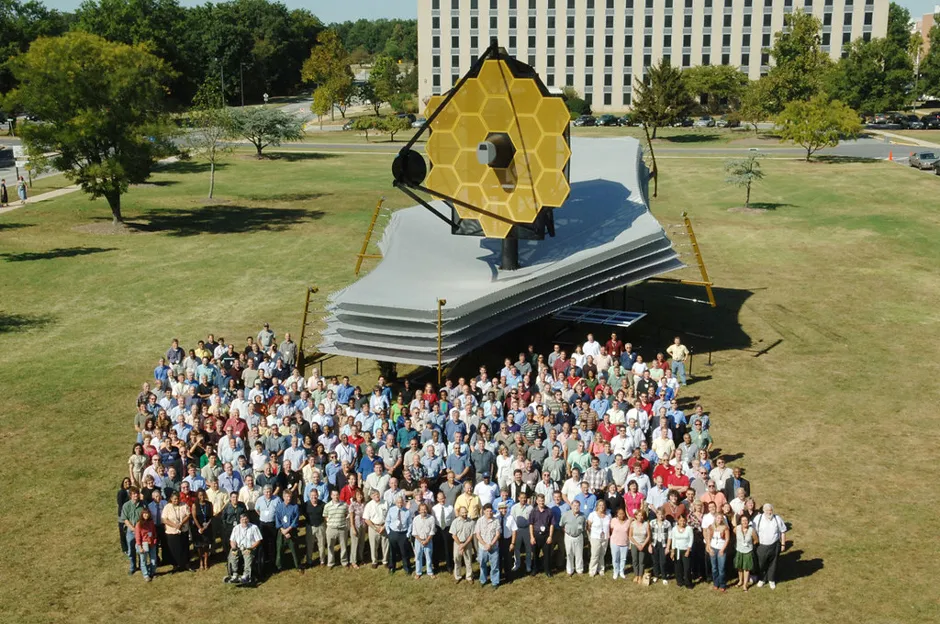Scientists at NASA, ESA and CSA have shared the first batch of full-colour images produced by the James Webb Space Telescope (JWST) – and they were worth the wait. The stunning collection of images and data from JWST, released just over six months since its launch, show us distant galaxies, the death of stars, and insights into how our Universe began.
Tuesday 12 July 2022 will be a date remembered by many. But why is the JWST such a big deal, and why are its images any better than those of its predecessor, the Hubble Space Telescope? We asked the experts to explain why this moment will be written in history books.
Webb's First Deep Field let us go back in time
The first image shared, called Webb’s First Deep Field, shows the SMACS 0723 galaxy cluster. The cluster in the image is as it was 4.6 billion years ago.
"JWST’s ability to peer back and glimpse the youngest galaxies ever spotted in the dawn of the Universe is exciting beyond words," said Matt Bothwell, astronomer at University of Cambridge. "It is the best tool the human race has ever built for learning about our cosmic origins — understanding where galaxies, stars, planets, and life come from.
"The telescope is quite literally a massive step forward in a quest, thousands of years old, to understand our place in the Universe. A step forward this big only happens a few times per century," said Bothwell.

Webb's Deep Field provides an insight into the early Universe, and the image itself will continue to reveal more information as scientists study the individual galaxies closer.
“Nothing beats the sheer exhilaration of looking at the Webb’s Deep Field and knowing that, in that pinprick of sky, are galaxies whose light has been travelling across space for most of the age of the Universe to reach us," said Marcus Chown, writer and former radio astronomer.
"[These are] galaxies that died long before the Sun and Earth were born, cannibalised in the multiple mergers that created the big galaxies which are a feature of the Universe today.”
"Just as geologists drill down through the ground to see earlier epochs of the Earth, astronomers drill down through look-back time to see earlier epochs of the Universe. JWST is the ultimate time machine, taking us, hopefully, to the epoch when the first stars switched on, ending the cosmic dark age which began when the big bang fireball faded away."
Galaxy cluster image revealed key ingredients for life
Pointed towards the galaxy cluster SMACS 0723, the telescope's spectrograph revealed the chemical composition of a galaxy located 13.1 billion light-years away. In this distant galaxy, scientists found oxygen, hydrogen, and neon.
"Spectroscopy is one of the most important tools in an astronomer's toolkit and now we're getting spectra of more distant galaxies than ever before," said Colin Stuart, astronomy author.
"Excitingly, the spectra show us the presence of both hydrogen and oxygen. In the modern Universe they are married together to form water, H2O – what this is showing us is that these key ingredients for life were already knocking around together just 700 million years after the Big Bang."

Scientists were also able to see water vapour present on exoplanet WASP-96 using JWST spectroscopy. The peaks of the spectrum revealed an atmospheric temperature of around 725°C on WASP-96.
Southern Ring Nebula demonstrates the stunning beauty of the Universe
The JWST images are beautiful, made even more so by an understanding of what they depict. They show just how spectacular the telescope, the technological marvel, is, says Pete Lawrence, astronomer and astrophotographer.
"I remember when Hubble’s refined images started to appear, revealing detail which felt like peeling off a layer of indistinction from what had been taken before," said Lawrence. "Now JWST has gone further and done it again."
"All of the first images are amazing, but the one that really stood out for me was NGC 3132, the Southern Ring. The level of detail and finesse in this image is frankly astonishing, especially when compared with what came before. Much of modern science is about analysing data, but the sheer visual beauty of this image also delivers clear insight into what is happening here."

The image of NGC 3132, also known as the Southern Ring Nebula, shows gas and dust being expelled by a dying star. These waves of molecules and particles create the wonderful colours of the nebula.
Most dying stars will end with a nebula such as this – even our own star, the Sun.
Stephan's Quintet has let us watch faraway galaxies interact
The image of five galaxies, called Stephan's Quintet, is the largest of JWST's subjects to date. The space shown in the image covers about a fifth of our Moon's diameter.
Astronomers have known about the group of galaxies since its discovery in 1877, but the new image shows never-seen-before details that open up more questions about the Quintet.
"There’s so much going on in this cluster of colliding galaxies," said Chris Lintott, astronomer and broadcaster. "From the individual bright young stars we can pick out, to the blazing light emitted by hydrogen falling onto a black hole in one galaxy, to the faint glow of dust between the interacting systems, the debris from their dance – it’s all fascinating.
"And, in the corners of the image, we can see countless other smaller and more distant galaxies. Proof of JWST’s ability to peer into the distant Universe."

James Webb Telescope images will inspire the next generation of astronomers
The telescope is expected to run for the next 20 years (though, like Hubble, it could go on longer). There are young astronomers, students and even children who are watching these images coming out today who will go on to work on JWST data in the future, said Ezzy Pearson, astrophysicist and author.
"Future astronomers will need to know a lot of physics and chemistry, and become experts in computer simulations, too," said Martin Rees, Astronomer Royal. "We can't, of course, do experiments on stars and galaxies, but we can learn a lot by doing 'experiments' in the virtual world of our computers. There's no doubt that the subject will remain vibrant."
Though these first JWST images show galaxies billions of light years away, Rees is equally excited aboutobservations that will be made of objects far closer to us.
"We'd like to know more about planets orbiting nearby stars. How many are covered in water? How many might even, via their spectrum, reveal evidence for life? The next generation of astronomers may need to learn some biology as well!"

These newly released images could inspire some to study astronomy, but they will also capture the attention of those who may not have seen galaxies and planets outside of the school classroom.
“What I am hoping to see is the public getting invigorated about space and science after seeing these images," said Pearson. "Back in the 1990s, the glorious images from Hubble captivated the world, and the JWST’s images will be higher resolution, look deeper, and will look into regions that Hubble could never see.
"It’s an exciting time to be in space science at the moment, hopefully this will bring a lot more people along on the journey.”

"I remember getting excited about the first images from Hubble back when I was just six years old; today I'm a professional astronomer and I've actually used Hubble for my research," said Emily Levesque, astronomer at the University of Washington.
"When a telescope like Hubble or JWST begins observations, it opens brand-new eyes on the Universe, answering long-standing questions and revealing lots of new ones for today's and tomorrow's astronomers to explore. The kids who are excited about the JWST data today could one day be using or even running the telescope, just like the scientists featured in NASA's event today.
"I'd want them to know that we're all every bit as excited as they are, both about these new observations and about the prospect of them joining us to study the cosmos in the coming years!
It will reveal things no one could predict
The telescope has a long list of targets, scientific questions that it will attempt to answer. But images from JWST bring us their own questions, and who knows what we'll find out over the next two decades.
"For every question we answer using the James Webb Space Telescope, we will ask 10 new ones," said Tim Gregory, meteorite scientist. "If Hubble taught us anything, it’s that the Universe is still full of surprises and is sublime, literally, beyond our imaginations."
For Alastair Gunn, a radio astronomer at the University of Manchester, these images mark the start of JWST's voyage of discovery.
"It will show us things we never knew existed, explain things that currently confuse us, and broaden our knowledge and perception of the Universe above our heads.
"But the greatest discoveries a new instrument makes always turn out to be those that were never even envisaged by their designers. JWST will be no exception."
Read more about the James Webb Space Telescope:
